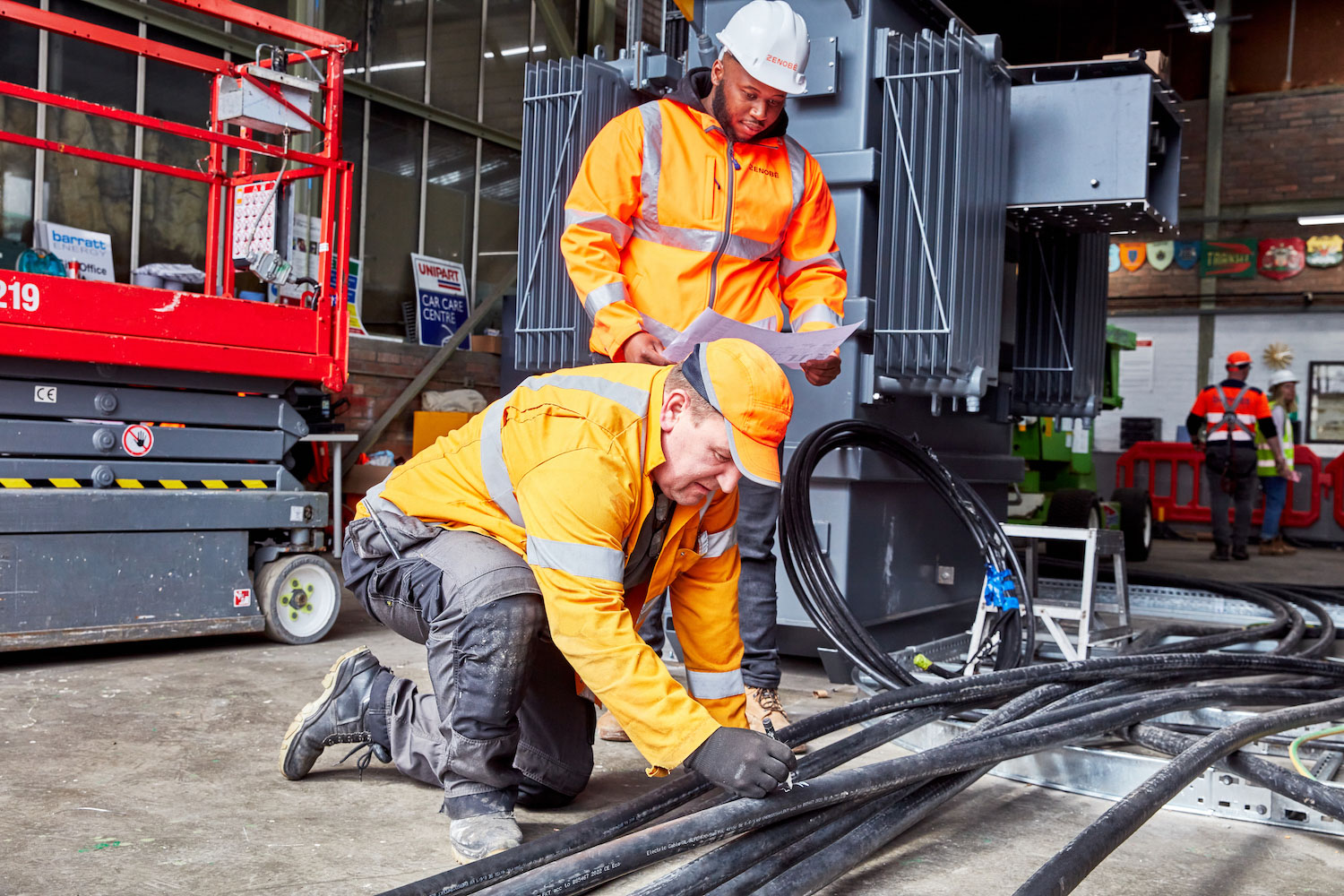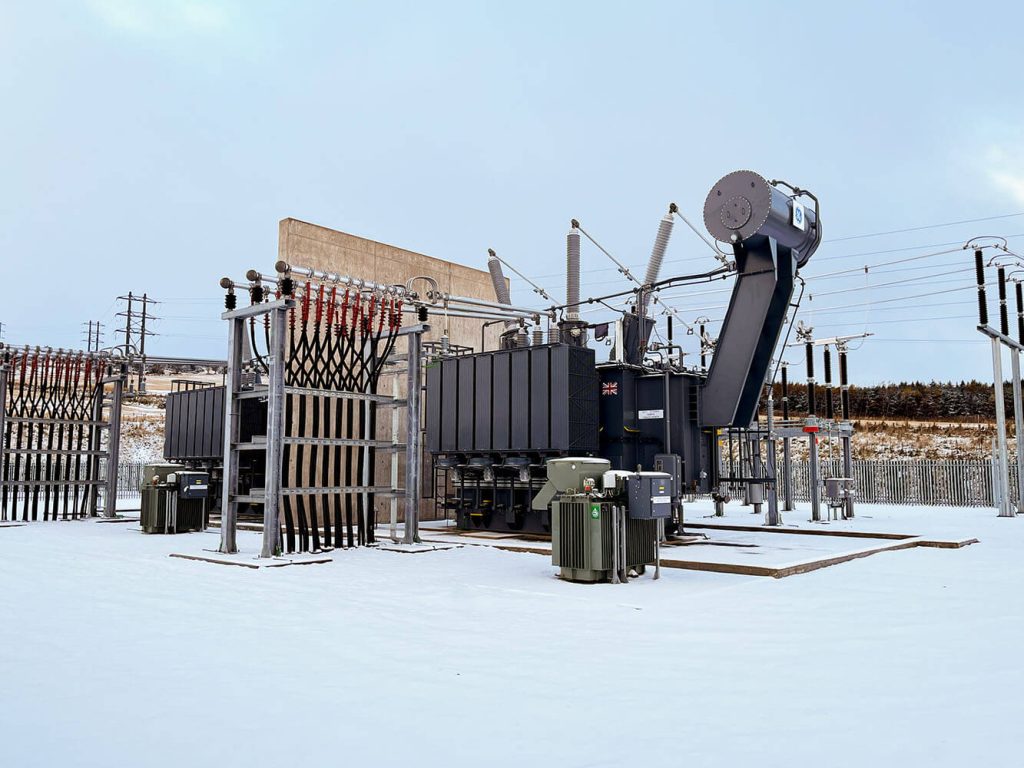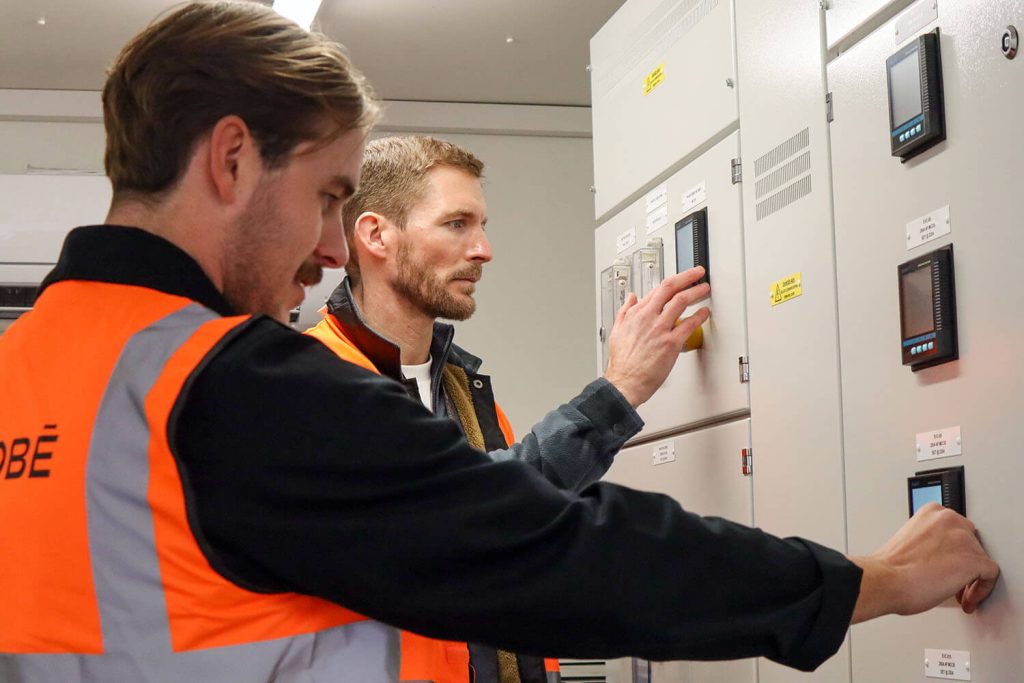Designing an electric bus depot with resilience in mind

Power outages on the electricity network can occur, so what does this mean for operators of electric bus depots? In this insight, learn about the electricity network, how depot design and maintenance can support resilience and hot to respond should the worst case scenario occur.
What happens when if there is a power cut?
As the shift towards electric buses accelerates, a critical question arises: what happens if the power goes out? The good news is that power outages are rare. In its 2023/24 annual review, UK Power Networks, the Distribution Network Operator (DNO) for London and the South East reported 99.99% network reliability with customers connected to its London network off supply for just 11 minutes per year.
However, incidents like the disruption at Heathrow Airport in March 2025 followed by the mass power outage across Spain and Portugal highlight just how disruptive power outages can be. This is where resilience and thoughtful infrastructure planning play a crucial role in ensuring that power can be maintained, even when the grid fails.
The cost benefit of resilience
When designing for resilience, it’s crucial to strike the balance between the benefits of additional infrastructure and the cost to implement it. Redundancy systems such as dual grid connections or extensive backup generators come with significant capital expenditures and ongoing operational costs. Learn more about these options later in the article.
It’s essential to ensure that any additional investment in resilience is justified by the tangible benefits it provides, both in terms of reliability and long-term value.
The good news is, the UK grid is reliable
The good news is that the UK’s electricity grid is generally very reliable, particularly at high voltage (HV) level. The system is designed with redundancy in mind, so if one substation fails, others can quickly take over. DNOs adhere to strict Service Level Agreements (SLAs), meaning unplanned outages are rare and typically resolved swiftly. In fact, DNOs may be required to pay compensation for an unplanned power outage, which financially incentivises them to restore power as promptly as possible.
In most cases, grid issues are addressed faster than it would take to deploy contingency systems, such as hired generators. This means that when managing on-site distribution and planning for long-term resilience, fleet operators should focus on ensuring systems are designed to maintain continuity.

Is a second grid connection the answer?
Adding a second grid connection may seem like the ideal solution for ensuring reliability, but it’s not always feasible. While the idea of a backup grid connection is appealing, it comes with substantial costs. Likewise, duplicating switchgear, cables and other infrastructure significantly increases costs too. Even if cost isn’t an issue, securing approval for dual connections can be time-consuming and in some cases the Distribution Network Operator (DNO) may not permit it.
Instead, a well-maintained single connection complemented by intelligent recovery systems will reduces costs while still ensuring reliability in the event of a disruption.
Private versus adopted High Voltage (HV) Networks
When designing an electric bus depot, one key decision is whether to choose a private or adopted High Voltage (HV) network.
- Adopted HV Networks: These are owned and managed by an Independent Distribution Network Operator (IDNO). They handle the maintenance, fault response and compliance.
- Private HV Networks: These are owned and operated by the depot owner, giving more control and flexibility. The owner can modify or expand the network as needed.
The advantage of an adopted network is that maintenance is outsourced, which might make things easier in the long run. However, approval processes can be lengthy, especially if a depot is on leased land. In such cases, a private network may be the quicker, more viable option.
At Zenobē, we evaluate each site individually to determine the best HV network for an operator’s needs, balancing factors like operational risk, potential growth and cost.

Choosing the right HV Network configuration for resilience
Radial configuration – simple and cost-effective
A radial HV network is a straightforward and cost-effective method of delivering power. Think of it like a daisy chain – a single line connects multiple transformers, each with its own switch.
One key consideration with radial setups is that a fault near the start of the line could impact the entire network. However, such events are rare and the system is designed to be both affordable and easy to maintain. With fewer cables and components, overall costs are kept low making this a budget-friendly option.
Radial systems are also easier to design, install and operate. While faults can occasionally cause disruption, each transformer is connected to the radial network via a Ring Main Unit (RMU) or ‘switch’ that allows for quick isolation and repair to minimise the impact on the rest of the circuit.
Private ring connection to the grid
A private ring connects to the National Grid and forms a loop around the site. If a cable within the site or depot is damaged, the other side of the ring can be used to supply power, minimising downtime and maintaining operations.
The main advantage of a private ring is its reliability. In the event of a cable failure, power can be restored from the opposite side of the loop, offering resilience and flexibility during maintenance or fault conditions. However, this setup requires additional cabling, which increases installation costs.
While a private ring improves reliability, it may not be necessary for smaller sites with only a few transformers or where the risk of cable damage is minimal. It’s important to assess whether the added investment is justified based on your specific site.
HV switch panels with individual radials
HV switch panels with individual radials provide each transformer with a dedicated feed, allowing isolated maintenance or repairs without disrupting the entire system. This setup confines faults to specific sections, meaning if a cable or transformer fails, only that part is affected and the rest of the network remains operational.
Similar to the private ring configuration, this design ensures easy fault management. However, individual radials offer superior circuit protection when needed. Depending on the site layout, this could either increase or decrease cable costs. This system works particularly well when the main intake of power is centrally located.
Disaster recovery - planning for the worst cast scenario
Private HV networks are designed for resilience, but unforeseen incidents, such as vehicle striking cables or third-party works, can still pose a risk. While faults are rare, having a plan in place ensures operations remain protected in the event of an outage.
A disaster recovery plan should be considered from the design stage and it may include:
Pre-installed generator connection points – Sockets at the LV distribution board allow temporary generators to be connected quickly and safely.
Access planning – Allocate space for the delivery and operation of temporary power equipment, with routes mapped for cabling and fuel delivery
Noise management – Plan for noise mitigation strategies, especially if temporary generators will be used in residential areas
Load prioritisation – Define which parts of the site need to be energised first in an emergency
Charging strategy – Integrate load-limiting logic into your smart charging system so the fleet can be charged over extended windows when supply is constrained.
Using smart software to enhance disaster recovery and reduce capacity requirements
Smart charging software reduces reliance on the grid or standby power by intelligently managing vehicle charging. It staggers demand based on operational priorities, spreading the load over time to avoid peak demand and minimise strain on limited infrastructure.
By integrating route schedules, state-of-charge data and departure times, the software ensures vehicles receive the precise energy they need, optimising capacity while power is restored.

Ongoing HV maintenance to keep your network safe and reliable
Even with the right network configuration, smart software and disaster recovery planning, one of the key aspects to maintaining a safe, reliable and efficient network is regular HV maintenance. Regardless of the configuration, planned maintenance helps identify wear and tear to prevent unexpected faults and extend the life of key assets.
Routine inspections including thermal imaging and functional testing of switchgear, cables and protection systems help to identify potential issues early. Maintenance also includes checking that the protection systems in place are aligned with the level of power consumption running through the depot as especially as a depot may add more vehicles, chargers or increases usage.
Addressing faults before they develop into failures is crucial to avoiding unplanned downtime. Whether your network setup is simple or complex, a structured maintenance plan ensures everything runs smoothly and safely, while also ensuring compliance with health and safety legislation and HSE guidelines.
Are you ready to start your electric journey?
This isn’t the future, it’s happening now. Our team of engineers and finance experts are here to help you on your journey. Fill out the form, and we’ll be in touch.
